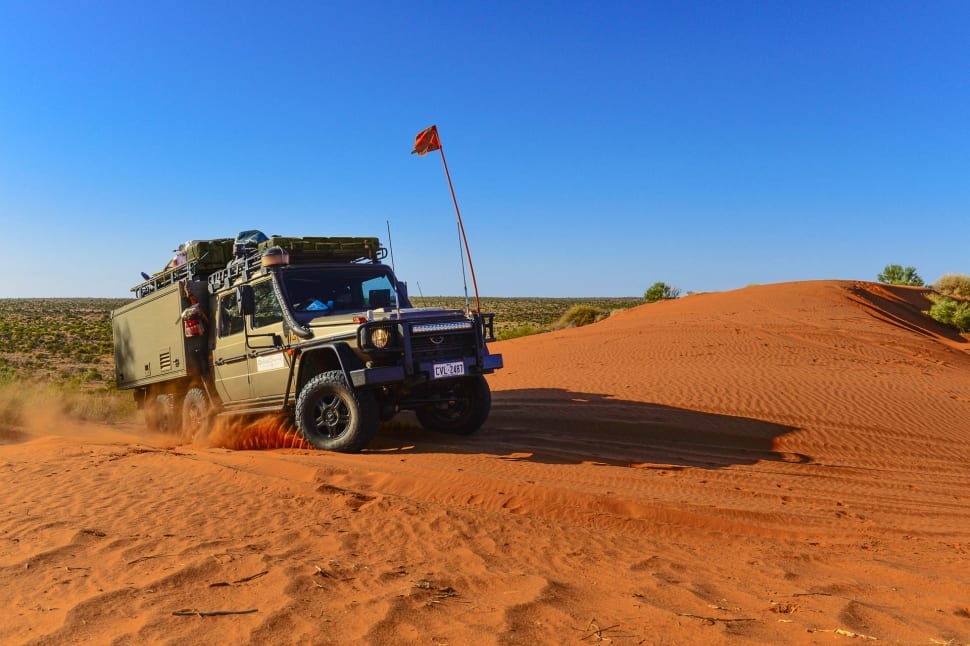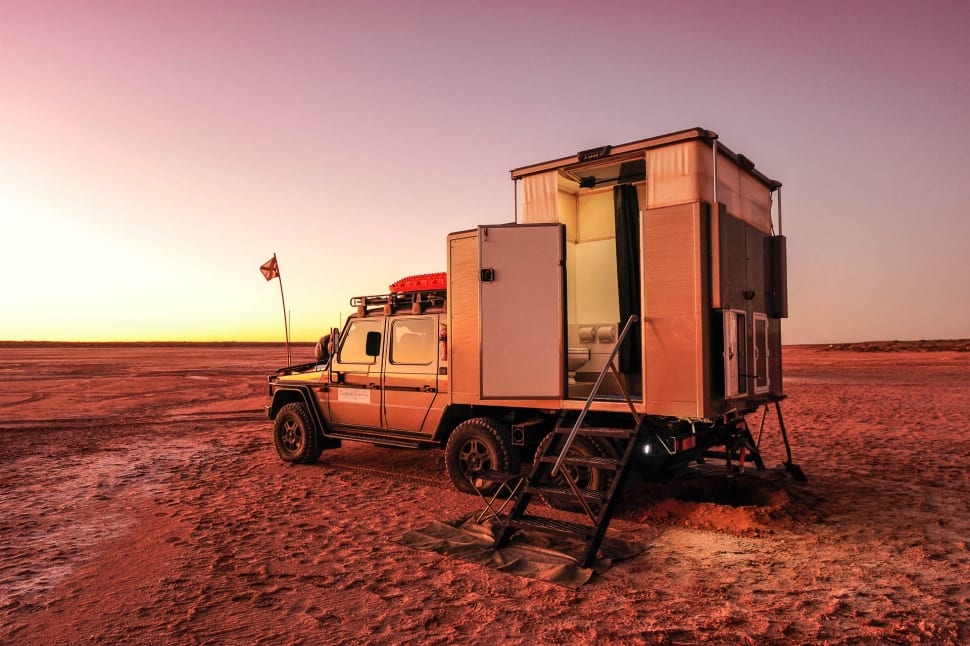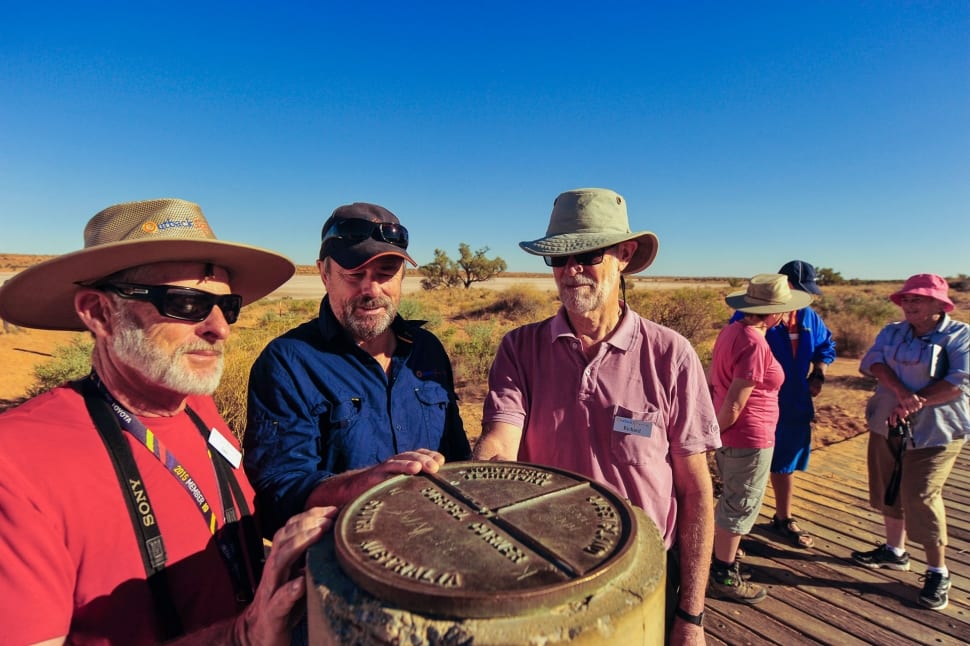
SIMPSON DESERT
SEATS SELLING FAST - Hurry, limited seats available
The Simpson Desert stretches across three Australian States and Territories. Situated in the far north of South Australia, it straddles the SA/NT Border and spills over into far western Queensland. Largely uninhabited, with dunes stretching as far as the eye can see, the Simpson Desert is the ultimate outback adventure.
The Simpson has nearly always been the realm of the 4WD enthusiast. Very few tour operators have had the know-how, equipment or courage to take people into this vast, iconic wilderness for fear of the operational challenges and harsh terrain. Until now.
Outback Spirit is one of only a few operators taking people through the Simpson Desert, but no-one does it quite like us. With state-of-the-art equipment, experienced guides and exceptional comfort, the Simpson is now in reach for those who don’t want to mount their own expedition.

The Mercedes Benz G Wagon
Unrivalled in the outback
Camping in comfort
Hot showers & flushing toilets make all the difference
The idea of going without basic comforts is enough to turn anyone off heading bush. Digging holes or hooking up a cumbersome hot water apparatus is no-one’s idea of a good time. That’s why our desert safaris are so unique.
In each G Wagon fleet, a 6×6 military style G Wagon features a specially engineered bathroom pod. Complete with 2 equal sized bathrooms with hot showers and flushing toilets, these pods are a real work of art and feature a hydraulically raiseable roof, large water storage tanks and effluent capture. So, in addition to providing that all-important level of comfort, we’re also looking after the environment by removing waste instead of burying it in the scrub.
A good night’s rest is just as important as a hot shower and a good meal, so we’ve provided the best camping equipment available to make the experience as enjoyable as possible. The large tents are easy to erect with only one centre pole and a few pegs. You’ll be sleeping off the ground on sturdy lightweight stretcher beds, with a self-inflating mattress to go on top. As the desert nights can get quite cold, we also provide you with a high-quality sleeping bag to keep you warm and comfortable.
No campsite is complete without a crackling fire, and it’s here that you’ll be able to relax and unwind at the end of the day, chatting to new friends under the desert stars.


History of the Simpson Desert
From early explorers to seismic surveys
The first European explorer to see the Simpson Desert was Charles Sturt, who visited the region in the 1840’s. Despite several attempts, nearly 100 years would pass before the Simpson would be crossed in its entirety by a non-Indigenous Australian.
Ted Colson, a pastoralist and explorer from South Australia, set off with an Aboriginal man named Eringa Peter from the Antakurinya tribe in May 1936 with the aim of crossing the desert west to east. Using camels to traverse the inhospitable landscape, they reached Birdsville in just over two weeks. After three days of rest, they turned around and made the return journey, covering a total of 600 miles in 36 days.
The Simpson Desert was named by Cecil Madigan, an Australian explorer and geologist from Renmark who led a major expedition across the Simpson in 1939. He named the desert in honour of Alfred Allen Simpson, the president of the South Australian branch of the Royal Geographical Society of Australasia. Interestingly, the Simpson family’s manufacturing businesses in Adelaide began making washing machines in the 1940’s, which are still sold under the Simpson brand to this day.
Various seismic surveys were carried out across the Simpson in the 60’s and 70’s. To determine the worth of its joint venture with leaseholder Delhi/SANTOS, The French Petroleum Company of Australia (FPCA) appointed another French firm, Compagnie Generale de Geophusique (CGG) to perform a seismic survey of the southern Simpson. The track which CGG pushed into the desert, aptly named the ‘French Line’ is still one of the major tracks used to cross the desert. Another track, the ‘Rig Road’, was also built in the 1960’s and was initially built to a standard for laden semi-trailers by sheeting the tops of the dunes with clay. Looking at the track today, it’s hard to imagine a truck and semi-trailer being even remotely capable of traversing the desert landscape.
13 44 26
All fares and journey information are correct at the time of publication but subject to change.

This site is protected by reCAPTCHA and the Google Privacy Policy and Terms of Service apply.
Aussie Trains Privacy Policy and Terms & Conditions